During the 49th Annual Nebula Awards streaming ceremony, Toastmaster Ellen Klages was called upon to entertain the audience while technical difficulties were resolved, a process that took much longer than anyone anticipated. This is, more or less, the story she told.
In the early ‘90s, my father’s brother gave him a Christmas present, a ham. Not the kind in a can, but a full-sized southern-style ham. A Smithfield ham. They are supposed to be aged a bit before serving, hanging for six months or a year in a dry Virginia smokehouse.
My father hung his in a damp Ohio basement.
For twenty years.
It hung in a corner of the room that held odds and ends, boxes and plastic bags of foam peanuts. When I was a kid, and we had a cat, it was the room that held the cat box and cat litter.
One day around 2005, I was helping my elderly father clean out a closet in the back hall. “Where do you want me to put these boxes? I asked.
“In the basement, in the room to the right of the stairs.”
“The scary ham and cat-shit room?” I asked.
He stared at me. “Why on earth would you call it that?”
I shrugged. “It’s where we used to keep the cat box, and it’s where the scary ham is.”
“It’s not a scary ham,” he harrumphed. “It’s a Smithfield ham. You’re supposed to hang it.”
Not for twenty years, I thought, but I did not say it out loud.
The ham was covered in some sort of netting, which was covered in many, many layers of mold and mildew. It loomed over the room. It made people gasp in horror.
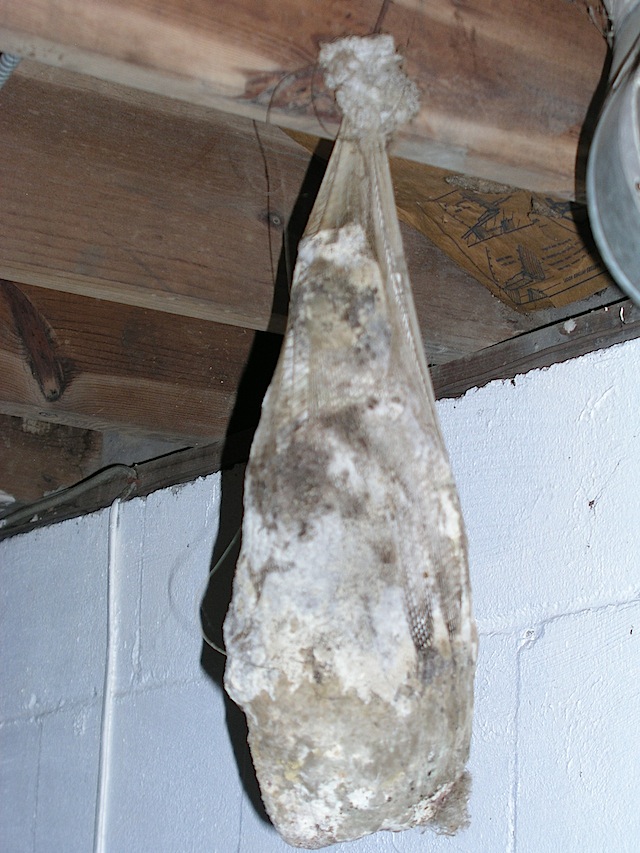
I tried to point some of this out to my dad, but he just scoffed. “One of these days, I’m going to take it out to my club…” (He was the sort of pillar-of-the-community man who had a club.) “…and give it to the chef. He’ll know how to prepare it. I’ll have a dinner party for my friends. It’ll be a gourmet feast.”
“Dad,” I said. “Your friends are all in their 80s. They will die.”
“Nonsense,” my father said. “It’s a Smithfield ham.”
My father died in the spring of 2008, at the ripe old age of 86, leaving behind three daughters, a house, and the ham.
After we’d taken care of all the urgent and important tasks that come with losing a parent, my sister Mary and I looked at each other and said. “What are we going to do with the ham?”
“Do you want it?” I asked.
“God, no!” She made a face. “I’d have nightmares. Do you?”
I shook my head. “But we can’t just throw it out.”
After a minute, Mary said. “I think we should have a Viking funeral. We’ll go out to a lake and put it on a raft and set it on fire.”
“We don’t have a lake.”
“We’ll take it to a park, then.”
“We are 50-year-old women. We can’t just set a toxic ham on fire in a public place. We’ll get caught. We’ll get arrested.”
“Okay, so how about we take it to Dad’s club and leave it on the 18th green and run?”
“People know us. We’re ‘Jack’s girls.’ We’ll get even more caught.”
“You are no fun,” she said.
The ham remained hanging in its room in the basement.
Meanwhile, there was probate and there were lawyers and banks and insurance and real estate people to be dealt with, because my father was a good Republican church-going Ohio businessman. And as the oldest daughter, it fell to me to meet them at the house and deal with appraisals and paperwork.
They were very professional, most of them women a bit younger than me, in power suits with power scarves and sensible heels. They were proper and respectful. And at some point in the middle of one of those visits, I would say, in my most polite hostess voice, “Would you like to see the ham?”
There would always be a pause, a slightly disconcerted look, and then they would smile and say, “Why certainly,” although they had no idea why I wanted to show them a ham.
So I’d turn on the light and lead them down the creaky basement stairs, and stop at the bottom. I’d open the door on the right just enough to reach in and turn on the light, and then I’d fling it wide open, and say, with pride in my voice: “This is our ham!”
Every time, the woman would leap back and emit a sound between a strangled squeal and a full-out scream.
I began to enjoy those visits.
It was a very scary ham.
I must add here that my father bought the house in 1951, and died in 2008, so there was 57 years worth of household stuff from basement to attic. And no one in my family throws things away, so I spent that summer clearing out my childhood, and my parents’ entire lives, and a fair amount of several ancestors’ worldly goods. It took months.
Dad had died in April, and finally, at the end of August, I’d gone through every closet, cupboard, cabinet, drawer, and box that I could find. I’d shipped home the few pieces of furniture I wanted, innumerable cartons of photos and memorabilia, filled two large dumpsters. It was time for an estate sale and then getting a crew to clean out the house and put it on the market.
The ham was still hanging in the basement.
Every month or so I’d call Mary and ask about whether she wanted me to set aside various things, what she wanted to do with Mom’s wedding dress and Dad’s army uniform, questions that I couldn’t answer by myself. And near the end of each call. I’d say, “What about the ham?”
“A Viking funeral!” she’d say. And I’d sigh and say no.
(I should clarify. I have two sisters, both younger. One has Down Syndrome, one is an English professor. I tell many stories about my family, and it’s not always easy to figure out which sister I’m talking about. In this case, it’s the professor.)
Finally, at the end of August, Mary flew to Ohio for a week to sort through the last of the stuff, say goodbye to the house we grew up in, and load Dad’s minivan with furniture and boxes and drive back to Colorado.
On the second-to-last-day of her trip, I said, “The ham. We have to deal with the ham and we have to do it today or tomorrow.” I gave her the big-sister stare. “Do not mention Vikings. We are not lighting it on fire.”
“Poophead,” she said. “But we have to have a funeral.”
“Absolutely.”
And so it began.
For my entire life, there had been a large gilt-and-white box that sat on a shelf in the family room, full of random snapshots. It was the sort of decorative box that one’s midwestern family has. We’d sorted through all the photos, and the box was going into the estate sale, but….
It was just the right size for the ham.
I put a bandana around my face and cut the ham down from its mooring in the basement ceiling. Mary went out and bought a length of red velvet. We draped it across the box and laid the ham out in state.

It looked better in the box. Like a mummified Egyptian baby. A small baby, maybe a few months old, wrapped in moldering cloth, resting on red velvet.
We took the box out to the backyard and set it in the shade of the towering elm tree. It looked rather sad and forlorn. We needed more accessories.
In the process of cleaning out the house, I had found many, many things whose existence I had never been aware of. There were cupboards that had been forbidden when I was a kid, and which I had no reason to look into on visits as an adult, and there were corners of the basement and attic that were just too deep in other clutter to have ever been visible.
At some point during the summer, I had found a trio of stuffed monkeys. Not taxidermy, just toys. Stuffed animals. Because I had two sisters, many items had come in threes—Christmas stockings, Easter baskets, matching beach towels. So three girls, three monkeys.
Except that I am the oldest, and I sell vintage toys on eBay, and I could tell that these monkeys significantly predated me. And they were very grubby and well-worn. Maybe well-loved, but I had no idea by whom. I had never seen them before.
But there they were, and they seemed to go with the ham, so we arrayed two of them around the gilt box. (The third one was too far gone to display.)
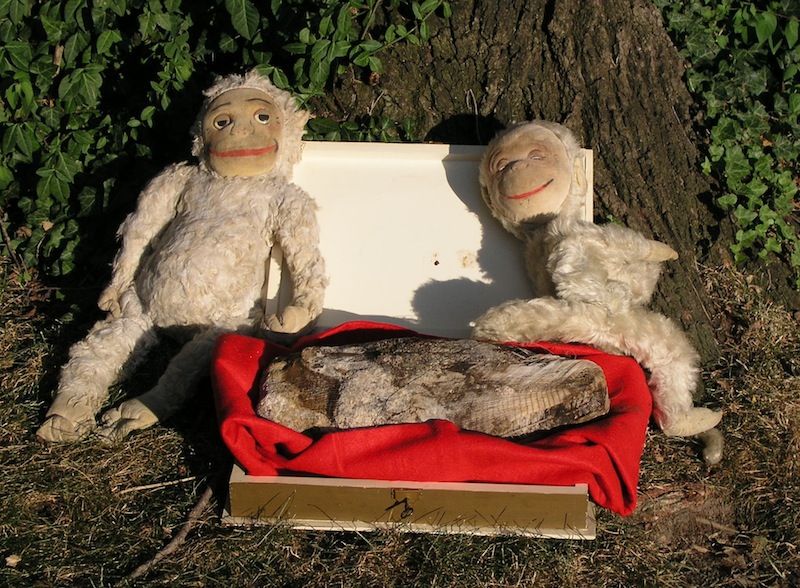
I had also discovered a hunting horn, about four feet long, the sort one might use to open the Derby or announce the release of the foxes. Never seen it before, either, but after four months, I was taking that sort of thing in stride. I took the horn out to the backyard and attempted to play Taps.
I have very little musical ability, and no experience with actual instruments, so I did not come close to succeeding, but I did make loud noises, and at one point played what might have been a bit of the Ohio State fight song. Appropriate enough for a Columbus, Ohio ceremony.
To complete the array, we had a shoebox full of used birthday candles. I do not know why my mother saved them. Even in an emergency, a used birthday candle will burn for, what, like an eighth of a second? But she had saved hundreds of them, so we doused them with lighter fluid, put the shoebox in front of the ham, and set the candles all on fire.
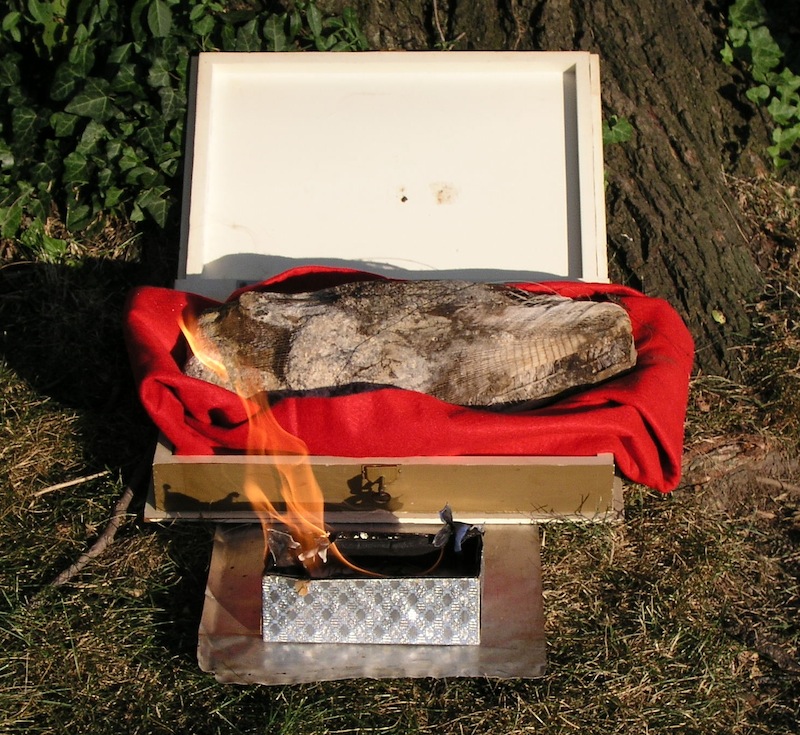
Between that and the hunting horn, it was sort of Viking-ish.
Soon we noticed that a few neighbors were peering over the fences that surrounded my Dad’s suburban backyard, to see what that horrible noise was, and stood, staring, at the flaming box and the decrepit monkeys and the very, very dead ham.
We waved. Nothing to see here. I stopped playing the horn. We ran the hose over what was left of the box of candles, wrapped the ham in its red velvet shroud, and got into the car. We drove to a local park. No raft, no more flammable materials, but there was a creek, so we figured we’d toss the ham into the water and say something nice about it.
A lovely little park, in the town we grew up in. We thought we’d just saunter down to the creek and have a ham toss and that would be that. But it was late in the afternoon, in August, on a Saturday, and about 400 families were having a picnic. We didn’t know all of them—it had been a long time since Mary or I had lived there—but we knew some. And we walked through their sea of plaid blankets and plastic tablecloths cradling what looked for all intents and purposes like a dead baby.
We smiled at people. I kept pointing to the bundle in my arms and mouthing, “Just a ham. Just a ham.” If anyone heard me, I doubt this was reassuring.
We finally got to the woods, and to the creek. Mary said a few words in Episcopalian, and I unwrapped the ham for the last time.

I swung once, twice, three times, getting enough momentum to actually get it up and out over the water, then let go and the ham sailed a few feet then sank like a prehistoric stone thing. Very fast. No bubbles, just a great bloop! and then nothing.
Requiescat in pace, perna formidilosa
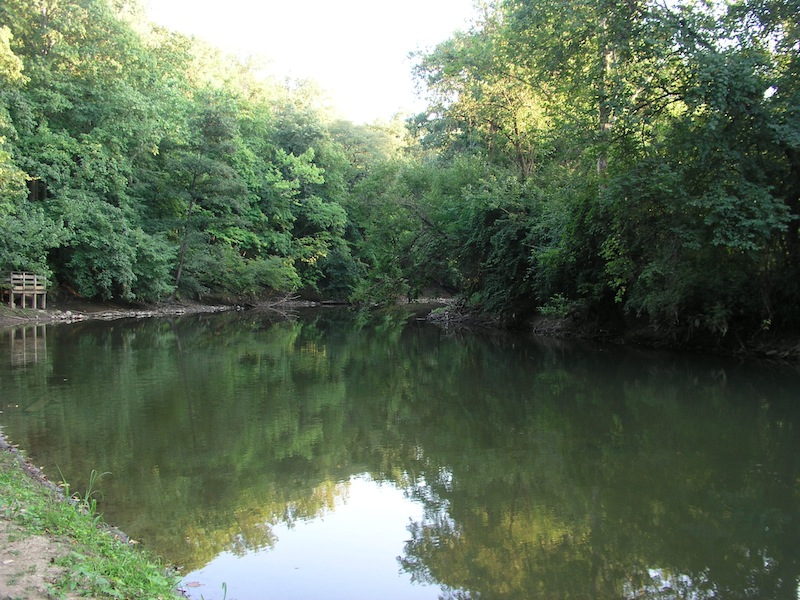
We folded the red velvet into a triangle, like a flag, left it by the creek, and went to have a few beers.
On Monday, Mary drove home. I spent another ten days finishing up the odds and ends at the house, checking the paper every single day to see if there were any reports of fish floating belly-up downstream, or people in Circleville dying of a mysterious plague.
No news was good news.
As far as I know, the ham is still there, at the bottom of the creek. Perhaps unchanged. I doubt that it was edible, by any sort of creature, and I’m not sure any substance could dissolve it. After I’d cut it down from the basement ceiling, I tried to carve into it, to see how far down through the mold and mildew I’d have to go before I hit recognizable ham-like-meat. I never found out. I broke three knives trying.
It was a very scary ham.










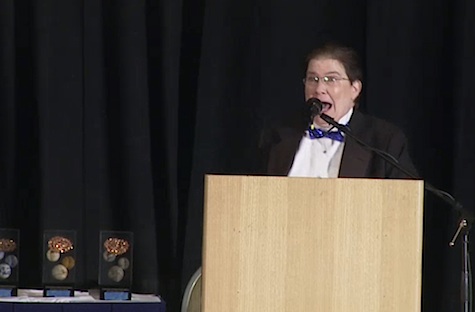

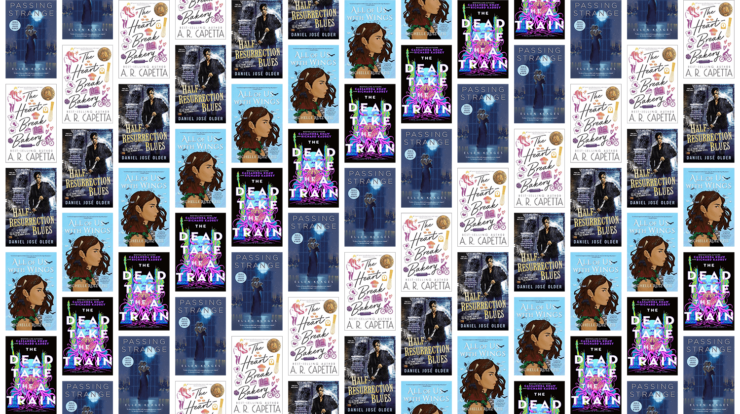
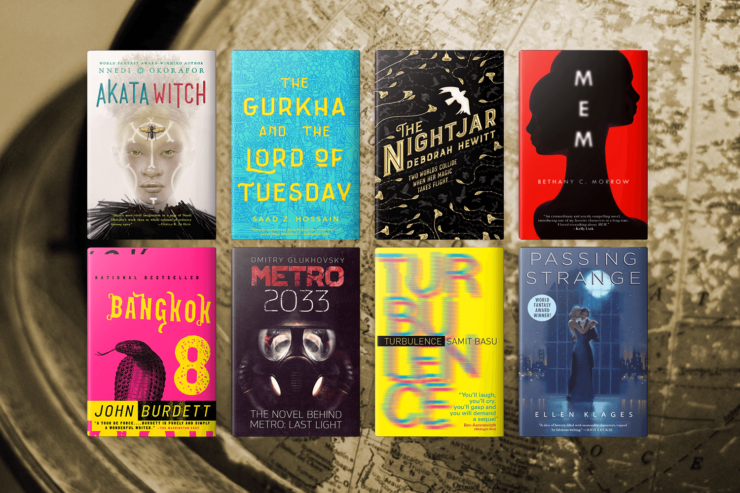

I will be having nightmares about this ham tonight. I do hope you’re satisfied with yourself.
My dad passed away recently, and my sisters & I have been working our way through 65 years worth of collection in the house. This sounds way too familiar – even the birthday candles! – and made me laugh and laugh.
No scary ham, though.
I had the wonderful fortune of meeting Ellen Klages at the 1999 Nebula Awards in Pittsburgh, PA, and being utterly charmed by her ability to tell stories on a verbal level (already being a fan of her writing). I can “hear” her voice telling this story and I’m tickled by it all over again, all the more envious for not seeing the actual performance of it.
And boy, does that ham scare me.
Thanks for the best laugh I’ve had in a while. Oh my.
We’re not going to think about whether the EPA might be interested in this fairly clear violation of the Clean Water Act through knowing and willful dumping of a potentially dangerous ham in a navigable creek…
First nominee for Best Dramatic Presentation Short form Hugo for 2015?
First nominee for Best Nightmare Fuel, Ham Form for 2015.
James Thurber, another escapee from Columbus, would have been proud of you, Ellen.
I was actually at the ceremony, and the delivery was hilarious.
The visuals do add quite a bit, however.
Familiar here as well — we never saved “edibles” at that level, but opening boxes of paperbacks that had been stored in a damp basement and built up interesting accretions of nitre is a not-dissimilar experience. Thank you, Ellen.
Sounds like your dad left you all something great – not just the ham, but the ability to know what to do with it, and the ability to find mirth when it’s needed. Great story.
Awww, man! I wanted the Viking funeral!
But, the creek was pretty awesome, too.
Limp from laughing…
Yeah, I couldn’t stop laughing either.
Wow. That even beats finding my evil grandmother’s urn in my parents’ basement and the friend who wanted to send it in an unmarked package to a federal building.
But I bet somebody coulda eaten it.
Can’t … breathe … laughing … too … hard …
This is a funny story, and well told, but wait until you look out the back window one evening, as the light is fading from the sky, and see the ham, sitting there in the yard. How did *that* get there? And did it just move closer to the house?!
It might have been effectively mummified, and safe to eat if not that palatable. There are places where hams are expected to gain a fungal surface.
But its effects on the water and water-life might take 10 or 20 years to show up…. Yes, it’s scary to people raised in a culture that’s a bit phobic about decay processes. I’m not entirely free of that unease myself, but I’m working on it. Good story, anyway.
I am reminded of a line from Arlo’s “Alice’s Restaurant.”
“I put that envelope under that garbage.”
Your story is pert’ near as good as Arlo’s, and that’s high praise.
Dear god, Ellen, you should have set it on fire.
I’m not entirely sure it would have burned.
Great story!
That is hilarious. And terrifying.
The story was hilarious, and the visuals made it even funnier. I second the Hugo nom for 2015!
In her freezer, my mother has the top layer of cake from her wedding in 1960. When the time comes, I think a Viking funeral would be very appropriate.
I’m a little worried about your stream. Those hams are preserved with a huge amount of salt. You may have altered the ecology of the stream for the next 20 years. I wonder if salmon will be attracted…
I third the Hugo idea!
But that’s a long way off, and she’s got a story on THIS year’s ballot.
I’m going to go support my new favorite writer.
So a friend just linked me to this, implying that it reminded him of the now-12-year-old ham in my basement (the joke for a while was that we were going to have it for my college graduation but complications came up so it never happened).
My mother was scared to buy such a ham. Dad apparently had fond menories of one such happening into his very poor and large family, but mom was the cook and she said no.
That ham looks like something that you would find hanging in Shelob’s larder.
Thanks. Hilarious. I’d be happy to invite you to a proper Spanish cured ham if we ever have the chance to meet !
Honey keeps saying “What are you laughing about?” Guess I’ll share…
How I wish I could tell stories like you! This was a great read. You’re dad sounds like he was quite the character, and that ham… I would have loved to see it in real life just once ;)
Have you ever read Terry Pratchett’s Tiffany Aching novels? I’m thinking Horace the cheese.
I’m also remembering The Big Clear Out after my father-in-law’s death. We found sausage in the fridge with an expiration date many years prior.
We also found a tupperware of dentures in the freezer.
And your creepy monkeys? I have seen such before: The Peanut Vendor – Len Lye 1933, https://www.youtube.com/watch?v=eQYZPwEdPoo
Enjoy!
My dad had the wine to go with that ham in his basement. Homemade strawberry wine, circa 1974. Finally dumped out in March 2009 — we were afraid the fumes from it would explode and take out the whole town.
Just saw you on jeopardy and I’m glad I googled the Scary Ham.
Now if you’ll excuse me, Double Jeopardy has begun…..
Great story, Ellen.
I KNOW, I was watching Jeopardy, too! HYSTERICAL, We cleaned out our parent’s house (my sister, childhood neighbor/friend, and I) No Hams, but we laughed and laughed at all the things we found! After we had an “Estate Sale” was the most depressing day of my life, people are ridiculous, want a couch for a quarter, color TV for 50c! (MY SON, will throw my stuff In The Dumpster !
!
Saw you on Jeopardy and I just had to read this story to find out about the ham. Don’t know the outcome of the show yet but cheering you on!
Me too!
That is just too funny! I heard about this when you were on Jeopardy, thanks for the laughs :)
prosciutto ham scares me so this was awful!
Just saw you on Jeopardy. Had to check out The Scary Ham. What a terrific story!!! Sorry you didn’t win Jeopardy but your story telling skills are fantastic!! Thank you!
I just saw your Jeopardy performance and had to read The Scary Ham. Living for 40+ years near Smithfield, VA and having an old smokehouse on our property, I thoroughly enjoyed your well-written and humorous tale about your dad’s ham! I’ll bet it continues to rest at the bottom of the lake.
This Buckeye saw you on Jeopardy tonight when you plugged “The Scary Ham”. I just had to look up your story and it is a hoot. Maybe that ham is what makes Circleville have such a big pumpkin festival.
This is the best! I appreciate your sharing your experience and (mis)adventures. Eloise in Florida
Our big time museum in Smithfield, Va, prominently features the world’s oldest ham, from 1902. The scary ham was probably the second oldest, but these girls ruined that cool heritage for their family. Sad. To be clear, you’re supposed to cook and eat a Smithfield Ham, not hang and hold intro it! I have no idea what that was about! Anywhooo, there are no more Genuine Smithfield hams. The last company just stopped production of them this year (2024). The “last” one is now in the museum.
What a delightful story, Ellen! I enjoyed every word and laughed out loud at times. You are a gifted writer and had me seeing and smelling the scary ham.
Loved you on Jeopardy tonight. The Scary Ham story brought back memories from my childhood growing up in Virginia. 6 months in those hams were so strong you could smell them as soon as you opened the smoke house door. I feel sorry for the poor cats using the litterbox in that room.
Watching Jeopardy and had to read the scary ham story. I laughed so much. Especially about your Mom saving birthday candles! Thanks for the story
Hi from one of the many who sought out your story after seeing you on Jeopardy; I got a huge kick out of it. Ten years after the events in your story, my dad died (also at 86) and I spent that summer doing all the same executor tasks in the house where my siblings and I grew up. We didn’t have a ham though. Sorry I didn’t get to hear you tell your story; it cries out to be read aloud. A toast to your dad and mine.
I saw the author on Jeopardy mention this story yesterday and had to find out for myself. This is hilarious. My last parent passed away 3 1/2 years ago, I have yet to go through their home. Now I wonder what I might find. LOL.. Thank you for the levity.
I saw you on Jeopardy yesterday and was curious about the story of the ham so I looked it up per your suggestion. Thank you for sharing the story. It was/is very interesting and definitely one of a kind.
Saw you on Jeapardy last night and cued up The Scary Ham during the commercial break and forgot about until I got online this morning. Glad I did! While there was no ham hanging in my childhood basement it brought back a lot of memories about cleaning out the house after moving my 90 year old mother into assisted living. In her dresser drawer I found an old moldy handbag I was about to throw out when I thought I’d better check inside. I found about $8000 in moldy bills! I took the cash home and washed them in hot sudsy water and laughed thinking it gives money laundering a whole different meaning! Thanks for sharing your story and the stroll down a shared memory lane.
Hi Ellen, Among the other recent posts, I too saw you on Jeopardy last night. What a great story. I would love to hear you tell it, but I can hear your voice as I read. This would be a great Moth story. As a parent of two daughters, one with special needs and who just graduated college, I loved the line: I “In this case, it’s the professor”
David
Back in 1987 my husband and I along with our 2 kids (4 & 7) bought and moved into an old house in NH. Guess what we found in the basement…that’s right a scary ham!! Now we had lived in New England our whole lives and my husband was a chef, but neither of us had ever seen a hanging ham. It was in a dank room deep in the basement. We thought there was something weird about the previous owner who were only slightly older than us with teenage children. we came across other gross things in that house as well. The neighborhood kids said our house was haunted…maybe by the ham.
We proceeded to renovate the whole house. When it came time for the ham removal my husband got on a ladder while my brother-in-law stood below with a large garbage bag one cut the other bagged and it went into the dumpster with all the other refuse. It’s probably in a landfill somewhere still aging…
Every once in a while someone in our family will bring up the ham. We now live in Colorado as well. It must be where ham people go!
Ellen: What a superb story! I dabble in writing and find your wordsmith-ing simply and delectably AWESOME!
-Paul M. Delaware
Ellen: I saw you on Jeopardy this past week and learned of this AWESOME story you wrote! It would be wonderful to hear you reprise your reading/retelling of this tale. I’m in awe of your writing and storytelling abilities! –
I had forgotten that my sister Mary *filmed* parts of the ham funeral. Want to hear the hunting horn?
.
(The whole video was a fundraiser for the 2016 film, The Scary Ham.).
.
https://youtu.be/nuwCSwuKHhA?si=Zoo4Mpd5Wyerg3GP
Best story I’ve seen in a long time. In the past three years I have helped clean out my parents’ home of 42 years, plus the home of my aunt and uncle, and been on the receiving end of household goods from my in-laws. All of these people are deceased and it was a struggle to know what to do with everything. An ancient ham was not, however, among the detritus. My parents had a wood burning furnace that helped get rid of a lot of stuff. Three huge dumpsters full, and the local thrift store barred us from bringing more stuff after about the 5th van load. I am currently working on our home of 28 years, attempting to not burden our adult children with a similar issue. Thanks for a very enjoyable read.
This ham provided much more joy in this manner to you and now the world than if it had just been eaten.
Just heard about this story from watching a rerun of Jeopardy when Ellen was on the program. Funny, funny, funny. I want to know, Ellen. Did you and your sister have a ham sandwich with that delicious beer after tossing the scary ham in the creek? You write like I would like to write my story – which I haven’t started. I need to write a book about the last 40 years of my life. I would love to meet
you. This whole incident was hilarious. You came from a wonderful family. Blessings.